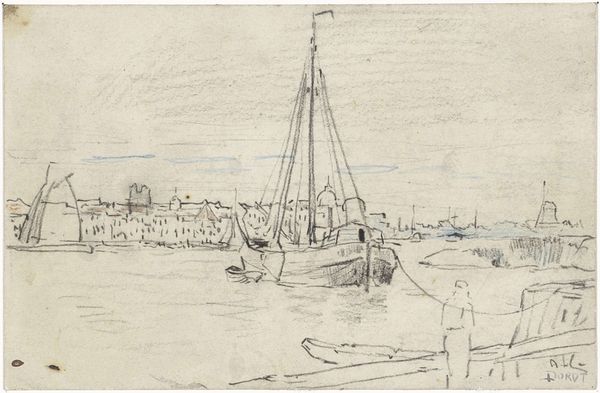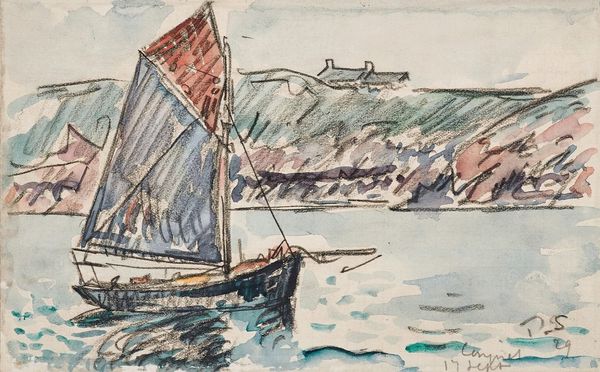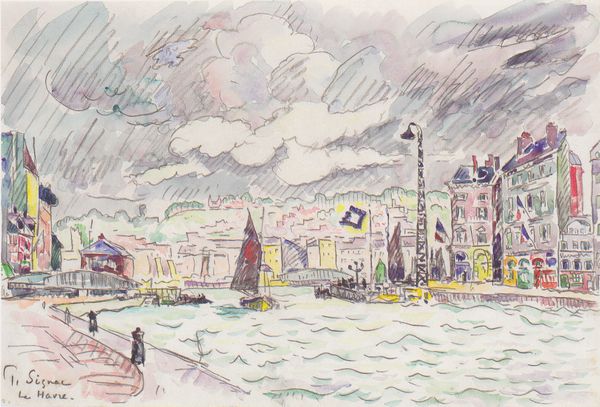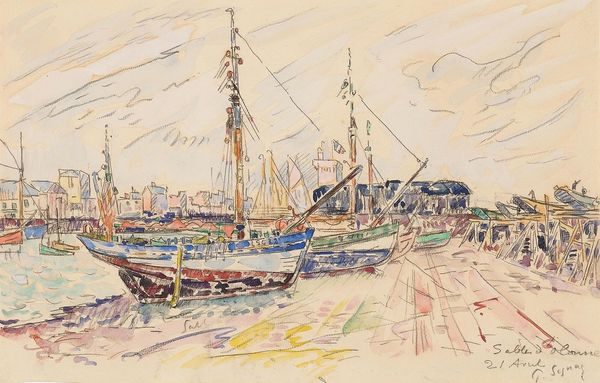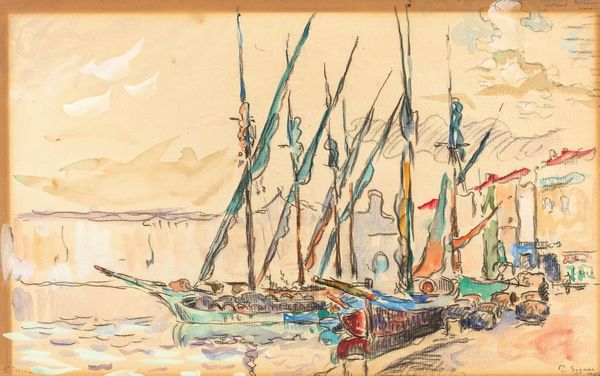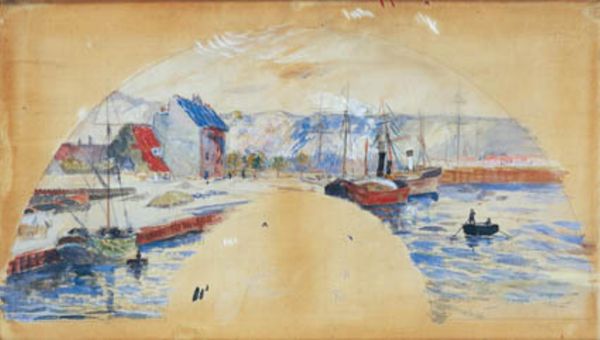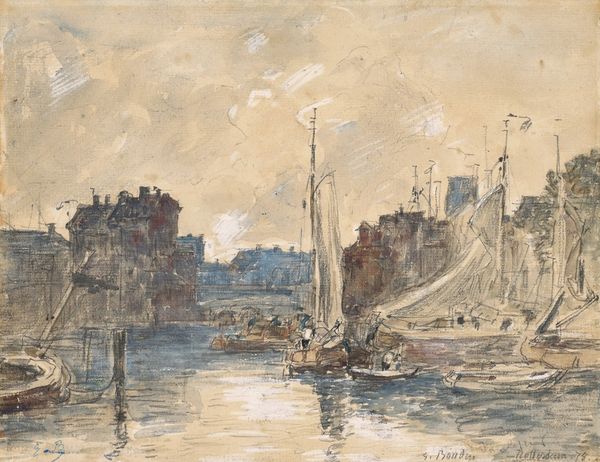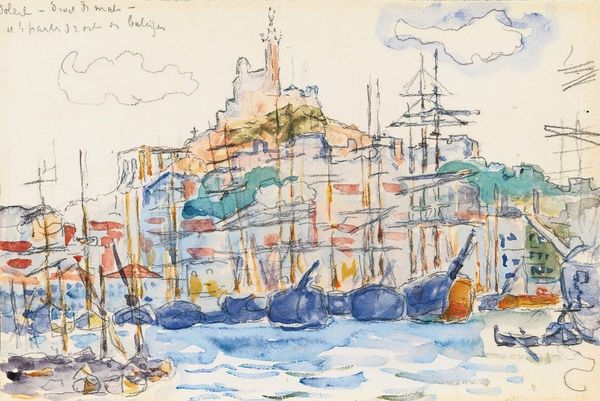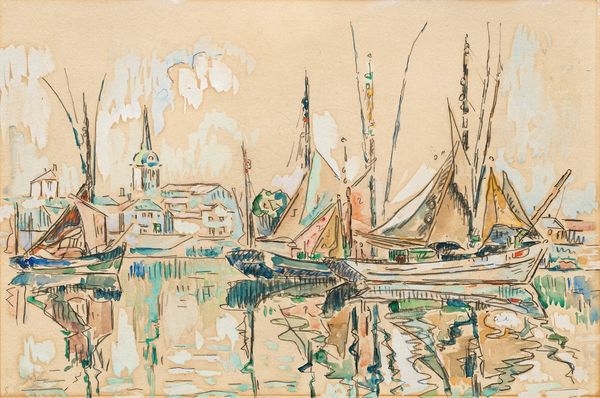
Copyright: Public domain
Editor: So, this watercolor painting is called "Le Conquet" by Paul Signac, created in 1929. It’s a harbor scene, very serene. The colors are muted, almost grayscale except for these surprising pops of ochre, red, and blue. What social commentary do you find reflected in it? Curator: Given Signac's Neo-Impressionist roots, visible in his earlier works, it is interesting how this watercolor shows the stylistic evolution, yet the spirit of engagement remains. I immediately think of Signac's active participation in leftist political movements. How does a scene depicting a quaint coastal town in Brittany, devoid of obvious labor or class conflict, resonate with his avowed anarchism? Is it simply a study in light and form or something more? Editor: Hmmm, I assumed it was *just* a pretty picture, focusing on the play of light on the water. What “something more” do you have in mind? Curator: Perhaps the ‘something more’ lies in what the painting *doesn’t* depict. Where are the signs of industrialization rapidly changing European coastlines in this era? This romanticized vision offers a counterpoint to the rampant urbanization affecting working-class communities. The calm harbor can also represent an escape from socio-political unrest. Signac, in a way, immortalized a specific way of life, which was also inherently an active commentary. How do the buildings figure in this context? Editor: They seem quite picturesque, almost intentionally timeless. Perhaps Signac wanted to promote the beauty of ordinary places, especially against a background of change… And I now note the people are absent, except for maybe 2 figures in the water? Curator: Precisely! The absence emphasizes the social structures or the ideal vision he promotes, even though its implementation isn't clearly prescribed, but this way a silent activism through visual experience happens. How fascinating that, nearly a century later, we're still unpacking layers within what initially appears to be just a pretty picture! Editor: I came in thinking this was simple impressionism and left with some fascinating insight into socio-political commentary of that era. This has helped me look more broadly!
Comments
No comments
Be the first to comment and join the conversation on the ultimate creative platform.
